What Are Some Adaptations Of Animals In The Deciduous Forest
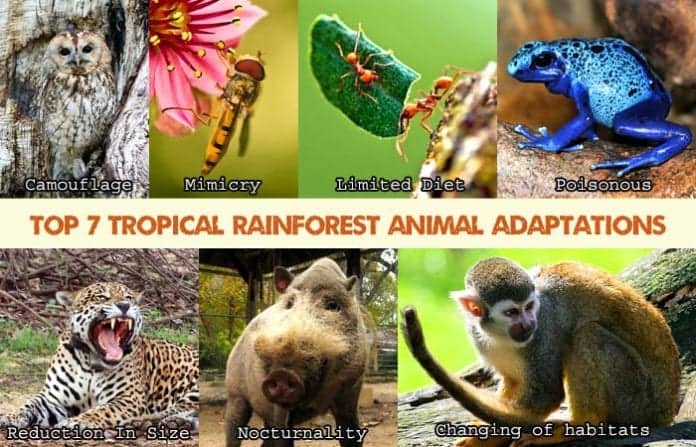
Tropical Rainforest Animal Adaptations : Tropical rainforests, because of their location well-nigh the equator, embrace merely a small area on our planet. Interestingly, this region is hugely oozing with biodiversity as it contains more than than half of the world's institute and animal species.
Table of Contents
- Tropical Rainforest Animal Adaptations
- 1. Camouflage
- 2. Mimicry
- iii. Having A Limited Nutrition
- iv. Toxicant
- 5. Reduction of Size and Stature
- half dozen. Nocturnality
- 7. Changing of Habitats
- References
The tropical rainforest is hot and humid, but the substantial amount of rainfall yearly makes it an ideal environment for life. But with great competition for natural resources, how do animals living in this environs adapt for survival?
In this commodity, let's explore meridian seven tropical rainforest animal adaptations: camouflage, mimicry, having a express diet, poison, reduction of size and stature, and changing of habitats with illustrations.
Tropical Rainforest Animal Adaptations
1. Camouflage
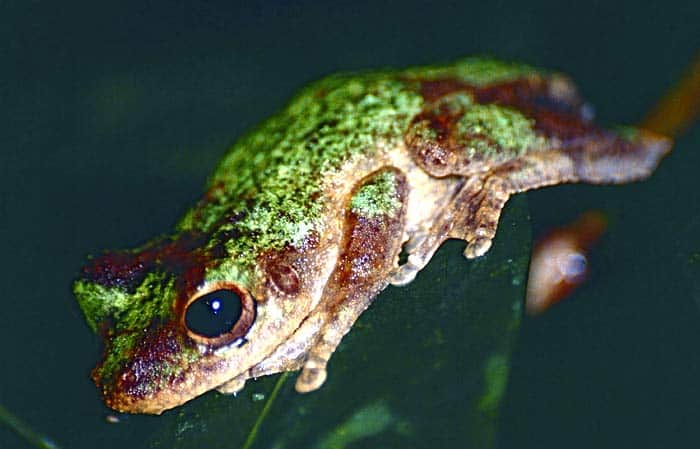
The first and most mutual animal adaptation in a tropical rainforest is camouflage. For an animal to successfully exhibit this accommodation, it needs not but to have a color that will assist it blend into the environment simply also a shape that is unrecognizable past its predator.
- One good instance of an animal practicing camouflage is the Greenish-eyed tree frog (Litoria genimaculata). This frog has developed flaps of textured skin around its body in club to resemble the barks of trees on it lives.
- Another similar example is the Leafage-tailed Gecko (Phyllurus cornutus) which exhibits camouflage by having a peel similar to tree bawl covered with moss.
- Another proficient example is the immature Southern Cassowary (Casuarius casuarius) which have an overall plume color of light brown with stripes of blackness. Such accommodation helps the cassowary to alloy in the vegetation it lives on. During adulthood, the cassowary becomes fully black.
Despite being advantageous in escaping predation, hiding through camouflage bears picayune significance from a predator's highly sensitive smell and impressive eyesight that can detect even the smallest movements its casualty. Cheque out all well-nigh leopard geckos here.
![]()
2. Mimicry
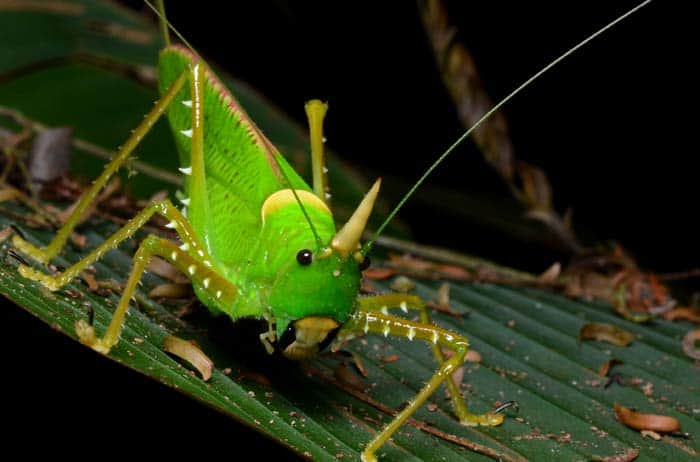
With the very dense vegetation and footling amount of sunlight that can laissez passer through the tree canopies, animals can easily hibernate in the rainforest. But instead of hiding, some animals resort to the adaptation chosen mimicry where they tend to expect like something that is intended to be seen (and not hidden similar camouflage).
- While seemingly alike at start glance, ane major divergence betwixt camouflage and mimicry is that the latter does not merely involves the resemblance to the physical appearance just too to the beliefs of other larger and more fearful organisms.
- An example of the animal exhibiting mimicry is a katydid (Aganacris pseudosphex) which do non just announced like a stinging wasp but also behaves like it. Different the wasp that has a venomous sting, the katydid is just pretty much a harmless relative of grasshoppers, and basically, it knows cipher about the venomous sting investments of a wasp.
The weirdest kind of mimicry is known as the Browerian mimicry that involves the animal copying other animals of the same species. While this adaptation still confuses scientists, information technology is believed that it reduces the possibility of the predator eating its potential prey.
Suggested Reading:

Pinnacle xviii BEST Tundra Animal Adaptations
The coldest areas on Earth, such every bit regions close to the Northward Pole and the South Pole, have unique features. Here are the top 18 tundra beast adaptations.
![]()
iii. Having A Limited Diet
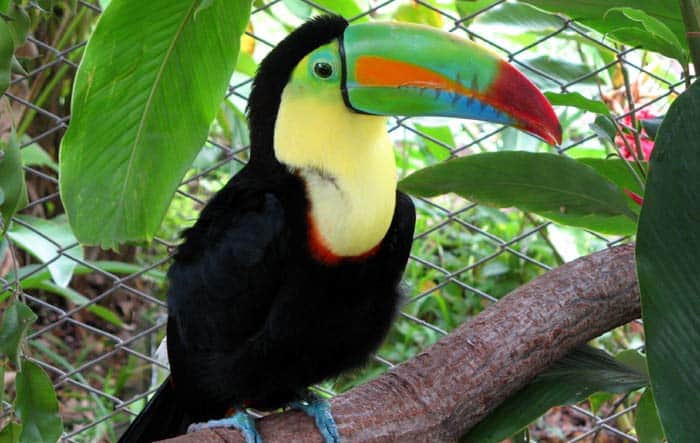
The rainforest is exceedingly total of natural resource only the competition for these is as well great. To avoid such competition, some animals have developed an adaptation wherein they reduce the choice of food they consume.
- Most of the animals that have reduced their diet are the bird species. The Toucans (Ramphastidae family) only consume fruits that other animal and even bird species cannot access. Along with this accommodation, their beak likewise had to become long and narrow to crevice these fruits open.
- Another example is the Leaf Cutter ants (Tribe Attini) which are known for their ability to carry objects that are multiple times heavier than their bodies. Every day, they carry pieces of leaves from the high trees to their habitats hole-and-corner. They coffin these underneath the ground and eat the fungi that arise as the leaves decompose.
![]()
4. Poison
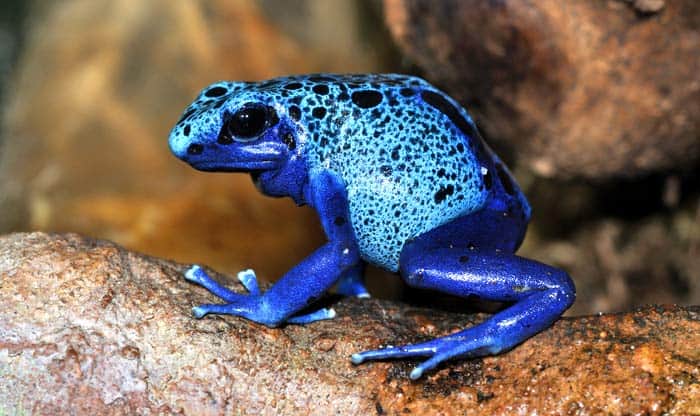
Bated from the production of poison per se, some tropical rainforest animals tend to accept vivid colors and distinct patterns to scare their predators.
- Poison dart frogs (Family Dendrobatidae) come in very brilliant colors of yellow, red, green, and blueish adorned with spots and swirl patterns. These bright colors are an indication to predators that they need to stay abroad or they will exist poisoned. Interestingly though, some dart frogs are non at all poisonous but they remain unharmed because they look similar their poisonous relatives.
- Lobster moths likewise exhibit this adaptation by looking like the venomous scorpions during its larval stage. They have patterns in their wings which await similar the eyes and such proceed them unharmed.
So instead of relying on hiding in the darkness and bark of trees, animals with poison can just freely hop without being bothered of being eaten.
![]()
v. Reduction of Size and Stature
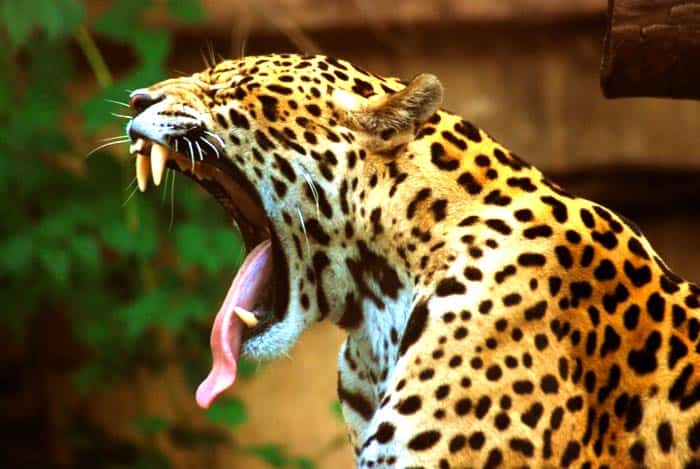
Despite being huge in terms of expanse, the tropical rainforest just favors smaller animals considering its understory (the layer above the wood flooring) is so dense that it makes big movements hard to execute. Hence, animals adapt to this by reducing their body size and stature?
- In a tropical rainforest, the jaguar (Panthera onca), the world's largest species of cat, tends to abound simply less than six feet long and weigh simply most 200 pounds. Such small congenital allows it to acquire the speed needed to hunt for nutrient.
- However, snakes are an exception to this rule. Snakes in tropical rainforests can grow larger than anywhere else in the world considering they can fit in the spaces between trees and fifty-fifty underground. Tropical rainforest snakes tin grow upwards to 20 to xxx anxiety long.
In general, we can see that the limited area for move is one of the chief reasons why big animals like the lions, zebras, giraffes, and elephants prefer to thrive in the savannas.
![]()
6. Nocturnality
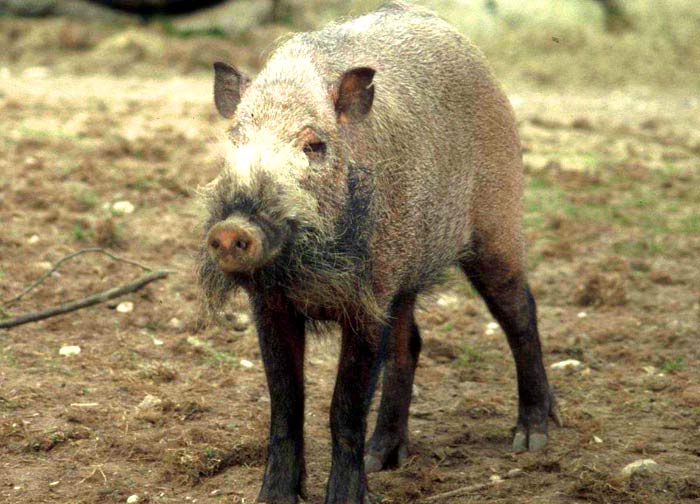
Another adaptation adult by rainforest animals is nocturnality. Basically, nocturnal (in dissimilarity to diurnal) animals are active during the night and are usually asleep or resting during the 24-hour interval.
- The bearded squealer (Sus burbatus) is a nighttime chocolate-brown sus scrofa with a beard and somewhat resembles an Airedale terrier. While ordinarily active during the solar day, pigs of these species resort to nocturnality when they migrate inside the tropical rainforest. When they do this, they commonly travel in groups (chosen herds) in the forest floor.
- On the other hand, from a predator's signal of view, nocturnality provides a great reward for food which seems to be nowhere during daytime (i.e., other nocturnal worms and mammals). Additionally, nocturnality also reduces competition as nearly predators hunt during the day.
Opting for nocturnality requires animals to heighten their other senses considering sight is of form useless. Some animals have developed a stronger odour, ameliorate hearing, and other organs like heat-sensing ones.
![]()
7. Changing of Habitats
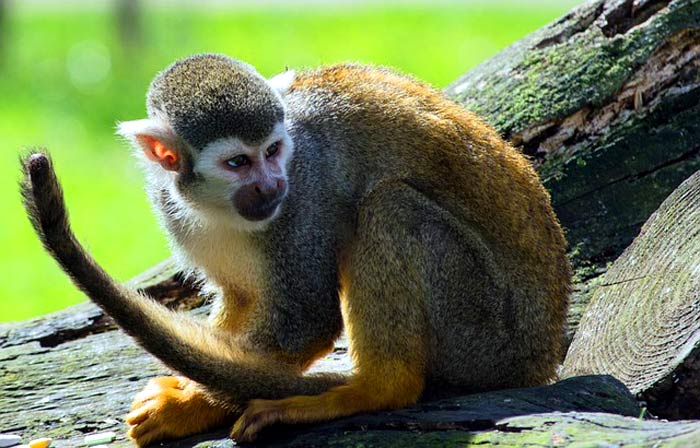
The tropical rainforest is a dwelling house to numerous towering copse. Hence, to make utilize of this nifty advantage, some animals tend to climb upwards the canopies and alive there.
- One case of this accommodation is the spider monkeys (Genus Ateles)that have chosen to alive at the tree canopies to avert groovy contest in the nether-story. These monkeys take developed tails capable of grasping that allow them to swing freely among trees. Sloths that alive by hanging upside down from high branches of trees are besides an example.
- The rule of changing habitats is for animals to maximize their protection from their predator equally well equally to limit the competition for food.
![]()
Whether it be using camouflage, mimicry, production of toxicant, nocturnality, etc., being physically adapted to the environment is an essential attribute to learn for animals residing in tropical rainforests. Indeed, the tropical rainforest is overflowing with such diversity and discovery; if simply we take the eye to look for them.
Comment beneath if any tropical rainforest beast adaptations were missed out.
![]()
Cite This Folio
References
- – "Skyrail Nature Diary – The Art of Disguise – Camouflage in the Rainforest". Accessed October 17, 2017. Link.
- – "UCSB Science Line". Accessed October 17, 2017. Link.
- – "Incredible rainforest mimicry | Wild Tropics". Accessed October 17, 2017. Link.
- – "Skyrail Nature Diary – Mimicry in the Rainforests of the Wet Tropics". Accessed October 17, 2017. Link.
- – "Adaptations of Animals in the Tropical Rain Forest | Sciencing". Accessed Oct 17, 2017. Link.
- – "Toucan | National Geographic". Accessed October 17, 2017. Link.
- – "leafcutter ant | insect tribe | Britannica.com". Accessed October 17, 2017. Link.
- – "Poison Sprint Frogs, Truthful Jewels of the Rainforest • Rainforest Animals". Accessed October 17, 2017. Link.
- – "Pelting Woods at Dark–From National Geographic (Rain Forest)". Accessed Oct 17, 2017. Link.
- – Tropical Topics by An interpretive newsletter for the tourism industry. Accessed Oct 17, 2017. Link.
- – "Spider Monkeys | National Geographic". Accessed October 17, 2017. Link.
Source: https://www.bioexplorer.net/tropical-rainforest-animal-adaptations.html/
Posted by: bowleytroses.blogspot.com

0 Response to "What Are Some Adaptations Of Animals In The Deciduous Forest"
Post a Comment